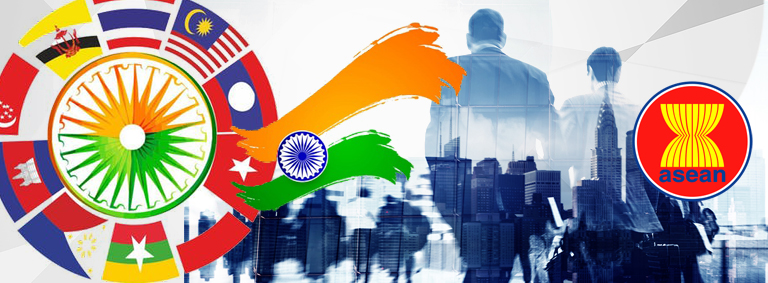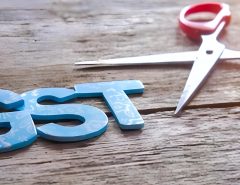At a time when large economies are moving towards protectionism, it is imperative for smaller economies to collaborate for future growth. Mega trade agreements such as CPTPP and RCEP have clearly positioned South East Asia strategically at par with Eurozone. United States’ ongoing trade war with China is expected to help the shift of manufacturing from China to ASEAN countries, majorly Vietnam and Malaysia, which will provide an opportunity for ASEAN to build a reputation for itself without China. Chinese manufacturers are already shifting their factories to Vietnam. Though the target of ASEAN Economic community for a highly integrated and cohesive economy is yet a distant dream, intra-region trade has definitely gone up to 25%. Needless to say, it is extremely important for India to build on its economic relationship with ASEAN.
As India headed towards a liberalised economy in 1991, it deepened its interest in collaborating with Eastern and South Eastern neighbours. The much lauded ‘Look East Policy’ moved to the next step in diplomatic relations to evolve into the ‘Act East Policy’ and trade between India and ASEAN grew from USD 2.9 billion in 1992-1993 to USD 81 billion in 2017-18. In 2019-20, the ASEAN economy is expected to grow at 4.7%, while India will grow at 7.4%. Total trade between India and ASEAN is expected to reach USD 100 billion by 2020.
At present, there are over 30 dialogue mechanisms between India and ASEAN cutting across various sectors. During the multiple visits of the Prime Minister, Mr Narendra Modi to ASEAN countries, India signed a number of MOUs for promotion of trade across various sectors, ensuring maritime connectivity and security, exchange of culture and collaboration in fighting the climate change.
Among the many areas of business collaboration, an important area is the SMEs segment, which constitutes 90% of total enterprises in the region. With the government’s focus, India has developed a very successful SME sector and could share its expertise with the ASEAN nations. It is imperative to have policies that will lead to growth of ASEAN SMEs and ultimately to the growth of trade amongst them.
India could also help the region in boosting the IT sector which will also be a driving force towards growing need for cyber security, and E-commerce market. The E-commerce sector in India is expected to reach USD 200 billion by 2026 and for ASEAN it is USD 100 billion. A growing middle class, young population and rising internet penetration will drive the market.
Agriculture, which is primary to the economy of India and ASEAN, also needs collaboration. Decline in arable land calls for the need for investment in smart farming.
There is a huge scope also in renewable energy and power generation in ASEAN countries such as Myanmar as these countries do not have the necessary infrastructure. Indian companies have planned investments, but the projects often get held up due to lack of physical connectivity, and the unavailability of credit.
Industry is happy with the current progress on the India-Myanmar-Thailand trilateral highway and congratulates PM Modi on the inauguration of integrated check-post. This is a crucial milestone and will ease custom clearance and cross-border movement of goods, yet without the IMT motor vehicle agreement, the effectiveness of highway remains limited. We urge the governments to finalise the motor vehicle agreement as road connectivity will open the entire ASEAN region and even beyond to the Indian products and will make the dream of borderless trade a reality.
Discussions on sustainable blue economy which includes fisheries, using smart shipment for goods transportation, tackling ocean pollution, conservation of marine life and oceans, harnessing renewable energy, and protecting coastal community from effect of climate change are some of the new areas of association between India and the ASEAN. Effective harnessing of blue resources, using new and old technologies, can lift a big proportion of population out of poverty. India and the ASEAN need to increase investment in marine technology to maximise the utilisation of resources and minimise the impact on climate. Besides its focus on global cooperation in renewable energy, FICCI is actively engaged in the dialogue on the Blue Economy. A special task force set up by FICCI on Blue economy engages on a regular basis with industry and the governments to discuss issues and the opportunities for the entire industry both in India and the ASEAN member countries and the countries in the pacific region.
Peace and security are essential for free and successful trade and the industry lauds the initiatives taken by Indian and the ASEAN governments to work together in this area. As governments work together for larger cooperation in defence and maritime security, industry on both sides also opens up to partnerships in supply and manufacturing.
Along with these initiatives, for smoother market access between India and ASEAN, a single ASEAN pass or ASEAN Visa for Indian businesses is a necessity. It will make free movement for business purposes easier and further increase trade and investments between India and the region.
Sandip Somany is President, FICCI and Co-chair, ASEAN India Business Council





